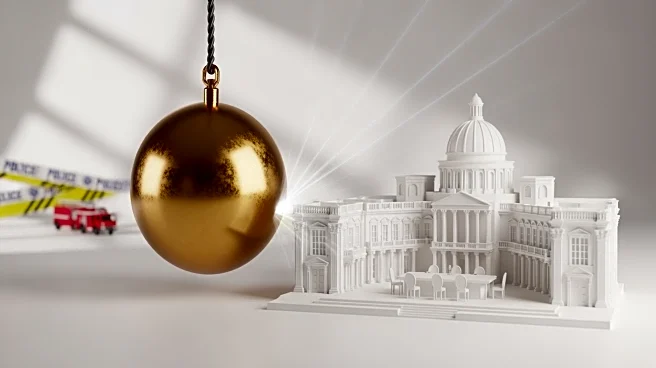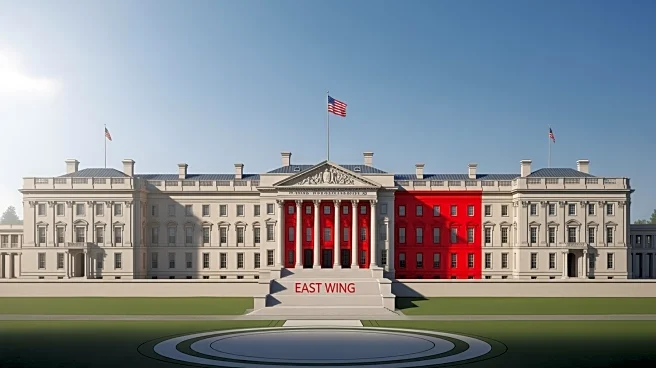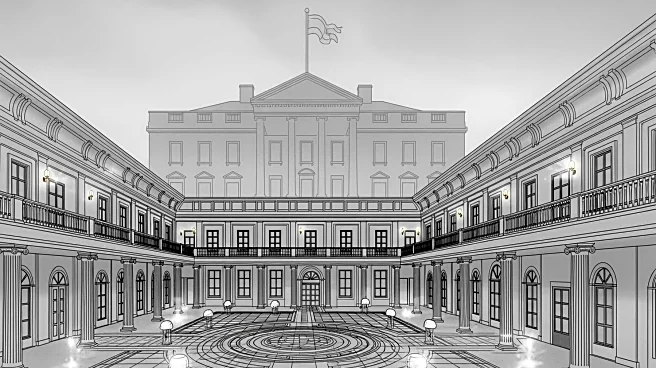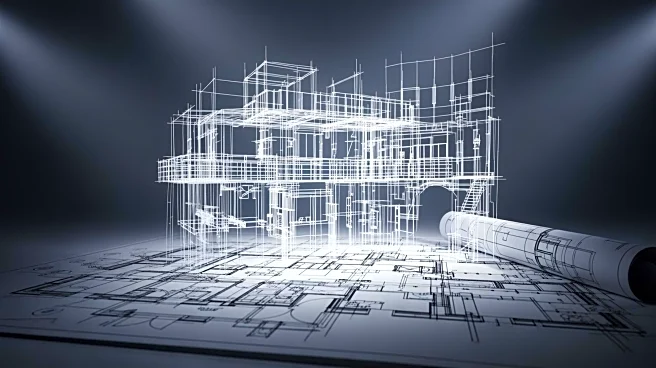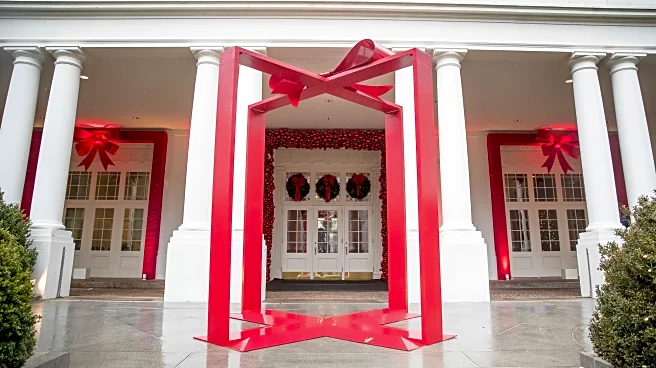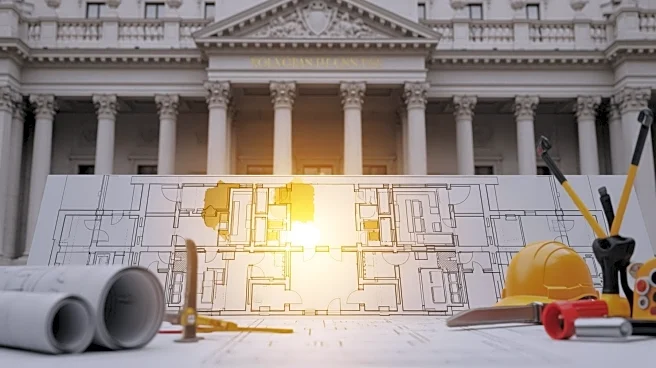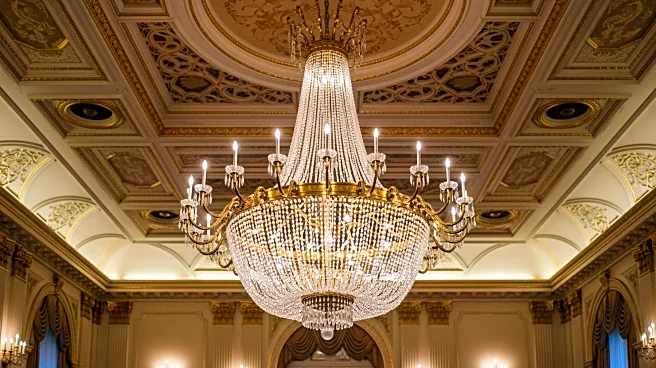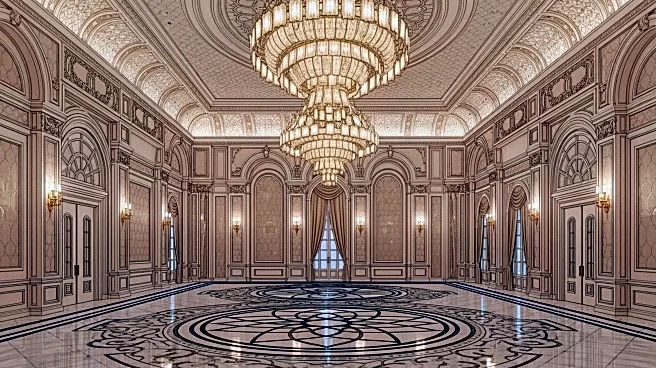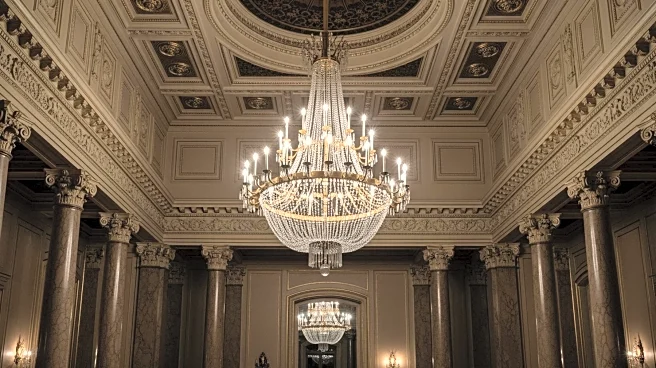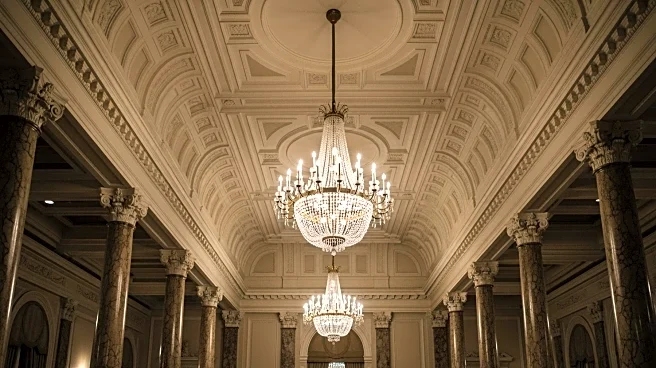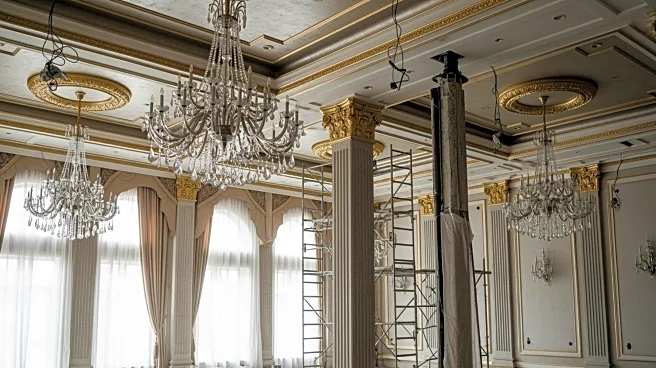What's Happening?
President Trump has commenced the demolition of the White House's East Wing to construct a privately financed $300 million ballroom. This development has sparked controversy, with critics arguing that it symbolizes the erosion of democratic values and
the defacement of a historic landmark. The ballroom, intended for large gatherings and events, replaces the space previously occupied by the First Lady's office and other administrative functions. The move has drawn comparisons to past presidential renovations, such as former President Obama's basketball court, highlighting differing public reactions.
Why It's Important?
The decision to replace part of the White House with a ballroom has significant implications for the perception of presidential priorities and the use of public spaces. Critics argue that it reflects a focus on personal grandeur over historical preservation and administrative functionality. This action may influence public opinion regarding President Trump's leadership style and priorities, potentially affecting his political capital and legacy. Additionally, the financial investment in such a project raises questions about resource allocation and the role of private funding in government property modifications.
What's Next?
As the demolition progresses, public and political reactions are likely to intensify. Stakeholders, including historians, preservationists, and political commentators, may continue to debate the appropriateness and impact of the renovation. The ballroom's completion could lead to further scrutiny of its use and the events hosted within, potentially influencing public perception of the administration's cultural and social engagements. Future administrations may also face pressure to address or reverse such changes, depending on evolving public sentiment.
Beyond the Headlines
The construction of a ballroom in the White House raises broader questions about the balance between tradition and modernization in government spaces. It highlights the ethical considerations of altering historically significant sites for personal or political purposes. This development may prompt discussions on the preservation of national heritage and the responsibilities of public officials in maintaining the integrity of iconic landmarks.
